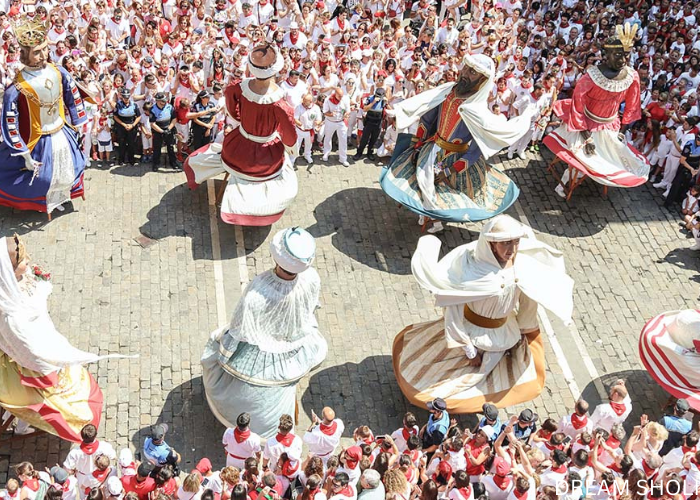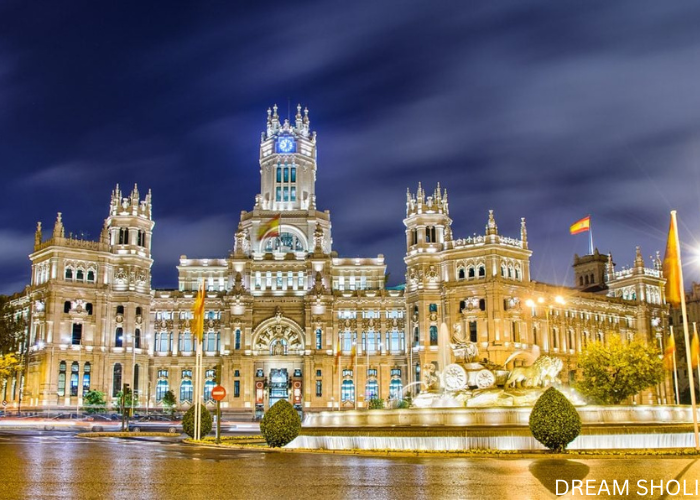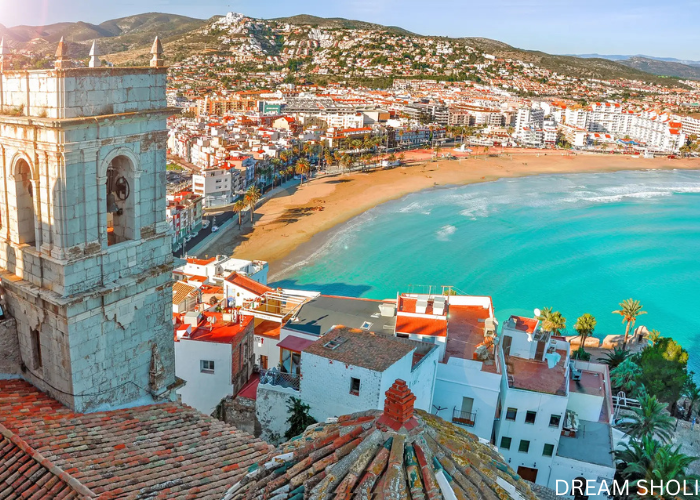
Spain is a vibrant country located in southwestern Europe, known for its rich history, diverse culture, and stunning landscapes. It occupies most of the Iberian Peninsula, bordered by France and Portugal, with coastlines along the Mediterranean Sea and the Atlantic Ocean. The country has a long and complex history influenced by various civilizations, including the Romans, Visigoths, and Moors, leading to a fusion of architectural styles and customs. Spain’s Golden Age, marked by the Reconquista in 1492, saw exploration and cultural flourishing, giving rise to notable figures such as Christopher Columbus and celebrated artists like El Greco and Velazquez. Spanish culture is renowned for its diversity, evident in lively festivals like La Tomatina and Semana Santa, as well as in flamenco music and dance, which originated in Andalusia. The country also boasts a rich literary tradition, with Miguel de Cervantes’ “Don Quixote” standing as a monumental work. Culinary delights vary by region, featuring tapas, paella, and local wines, with distinct flavors from each area. Geographically, Spain offers beautiful beaches, rugged mountains like the Pyrenees, and rolling plains, with a climate ranging from hot Mediterranean summers to cooler northern conditions.
Spain experiences a diverse range of climates, primarily influenced by its geographical location and topography. The country can be broadly categorized into three main climate zones: Mediterranean, oceanic, and continental. The Mediterranean climate, predominant along the coastal regions, is characterized by hot, dry summers and mild, wet winters. Cities like Barcelona and Valencia enjoy sunny weather, making them popular tourist destinations, especially during the summer months. In contrast, the northern coastal areas, such as Galicia and the Basque Country, experience an oceanic climate, featuring cooler temperatures, higher humidity, and more rainfall throughout the year. The interior regions, including cities like Madrid, have a continental climate, with hot summers and cold winters, often seeing temperature fluctuations that can be quite pronounced. In the southern region of Andalusia, temperatures can soar during summer, making it one of the hottest areas in Europe. Overall, Spain’s varied weather allows for year-round tourism, with each season offering unique experiences, from beach vacations in the summer to skiing in the winter months in the Sierra Nevada mountains.

Spain boasts a rich and diverse culinary heritage that reflects its vibrant culture and regional variations. Spanish cuisine is renowned for its bold flavors, fresh ingredients, and unique dishes, with tapas being a quintessential aspect of social dining. These small plates can range from olives and cheeses to more elaborate offerings like patatas bravas and jamon iberico. Paella, a saffron-infused rice dish originating from Valencia, is another iconic staple, often featuring seafood or meat. The culture of Spain is deeply rooted in traditions, with festivals such as La Tomatina and San Fermín showcasing the country’s lively spirit and communal values. Flamenco music and dance, originating from Andalusia, express the passionate and expressive nature of Spanish culture, while architectural marvels like the Alhambra and Gaudí’s Sagrada Família reflect the country’s rich history and artistic flair. Spain’s warm hospitality and vibrant street life make it a captivating destination where food and culture intertwine seamlessly, inviting visitors to indulge in the local lifestyle.


Madrid, the vibrant capital of Spain, seamlessly blends its rich history with a modern lifestyle, making it one of Europe’s most dynamic cities. Known for its grand architecture, Madrid is home to stunning historical landmarks such as the Royal Palace, the majestic Plaza Mayor, and the ancient Egyptian Temple of Debod. The city is also an art lover’s paradise, housing world-famous museums in the “Golden Triangle of Art,” which includes the Prado Museum, the Reina Sofía Museum, and the Thyssen-Bornemisza Museum, collectively hosting masterpieces by Goya, Velazquez, Picasso, and Dali. Madrid’s role as Spain’s political, cultural, and economic center is mirrored by the presence of global businesses, making it a significant hub in Europe. Its main international gateway, Adolfo Suárez Madrid–Barajas Airport (MAD), connects the city to destinations worldwide, making Madrid a popular destination for tourists, students, and professionals alike. The lively festivals, vibrant local traditions, and warm hospitality create a rich, engaging experience for everyone visiting Madrid.


Barcelona, the capital of Catalonia, is a city celebrated for its unique blend of historic charm, avant-garde architecture, and Mediterranean lifestyle. A hub for art and culture, Barcelona boasts numerous museums, including the Picasso Museum, which houses an extensive collection of the artist’s early works, and the Joan Miró Foundation, dedicated to the surrealist painter. La Rambla, the city’s famous tree-lined boulevard, bustles with street performers, market stalls, and cafes, leading down to the historic Port Vell and the beaches that stretch along the Mediterranean coast. Barcelona’s modern, efficient transportation infrastructure includes Barcelona-El Prat Airport (BCN), one of Spain’s largest airports, connecting the city to destinations across Europe, the Americas, Asia, and beyond. With its combination of modern amenities, rich cultural heritage, and scenic coastal setting, Barcelona continues to be one of Europe’s most visited cities, drawing millions of tourists each year.
One of Valencia’s most striking features is the City of Arts and Sciences, a sprawling cultural and architectural complex designed by Santiago Calatrava. This modern icon houses an opera house, planetarium, science museum, and one of Europe’s largest aquariums, making it a must-visit for those interested in contemporary architecture and cultural exploration. Valencia, Spain’s third-largest city, is a vibrant blend of history, modern innovation, and Mediterranean charm. The city is famous as the birthplace of paella, Spain’s beloved rice dish, which originated in the region and remains a point of local pride. Visitors can savour authentic paella Valenciana made with local ingredients, along with an array of traditional Spanish and Mediterranean dishes available in the city’s many markets and restaurants. Valencia Airport (VLC) serves as the main gateway to the city, offering connections to numerous European destinations. The airport provides convenient access to Valencia’s urban attractions, beautiful beaches along the Mediterranean coast, and scenic surrounding countryside.


Explore the world effortlessly with our tailored travel packages. Let us handle the details while you create unforgettable memories.
Copyright 2024 Dream Sholi